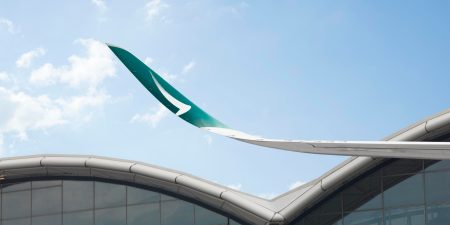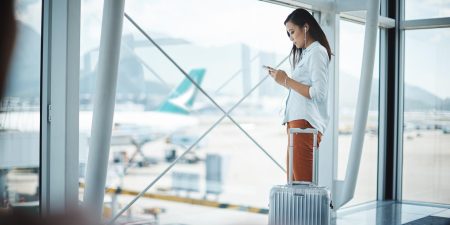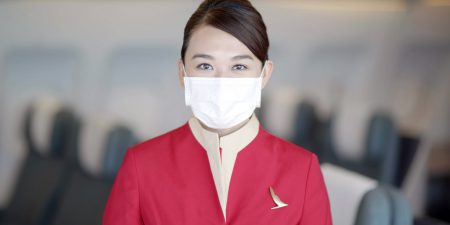Cathay Pacific Airways Limited Announces 2017 Annual Results
| Results |
| 1H2017 | 2H2017 | FY2017 | FY2016 | Change |
|---|---|---|---|---|---|---|
| Revenue | HK$ million | 45,858 | 51,426 | 97,284 | 92,751 | +4.9% |
| (Loss)/ profit attributable to the shareholders of Cathay Pacific |
HK$ million |
(2,051) |
792 |
(1,259) |
(575) |
-119.0% |
| (Loss)/earnings per share | HK cents | (52.1) | 20.1 | (32.0) | (14.6) | -119.2% |
| Dividend per share | HK$ | - | 0.05 | 0.05 | 0.05 | - |
The Cathay Pacific Group reported an attributable profit of HK$792 million in the second half of 2017, compared to an attributable loss of HK$2,051 million in the first half of 2017 and an attributable loss of HK$928 million in the second half of 2016. Cathay Pacific and Cathay Dragon reported an attributable loss of HK$1,538 million in the second half of 2017, compared to an attributable loss of HK$2,765 million in the first half of 2017 and an attributable loss of HK$2,580 million in the second half of 2016.
For 2017, the Cathay Pacific Group reported an attributable loss of HK$1,259 million for 2017. This compares to a loss of HK$575 million in 2016. The loss per share was HK32.0 cents in 2017 compared to a loss per share of HK14.6 cents in 2016.
Fundamental structural changes within the airline industry continued to create a challenging operating environment for our airline businesses in 2017. In response, we took decisive action through our transformation programme to make our businesses leaner and more agile and more effective competitors. Our focus in 2017 was on building the right foundations, structure and strategy to improve revenue and to better contain costs. Evidence of progress became apparent in the second half of the year. Airline losses in the second half of 2017 were lower than those in each of the two preceding half years.
The factors which affected our performance were largely the same as in 2016. Overcapacity in passenger markets led to intense competition with other airlines and continued pressure on yields on many of our key routes. Fuel prices were higher, but fuel hedging losses reduced. As the year progressed we began to see positive results from our transformation programme and our business also benefited from a strong cargo business, a weaker US dollar, and improved premium class passenger demand.
The contribution from subsidiary and associated companies was satisfactory.
Passenger business
Passenger revenue in 2017 was HK$66,408 million, a decrease of 0.8% compared to 2016. Capacity increased by 2.8%, reflecting the introduction of new routes and increased frequencies on other routes. The load factor decreased by 0.1 percentage point, to 84.4%. Yield, which was under pressure for most of the year, fell by 3.3% to HK52.3 cents, albeit improving by 3.1% in the second half of the year compared to the first half.
Cargo business
The Group’s cargo business benefited from robust demand in 2017, with cargo revenue increasing by 19.1% to HK$23,903 million. The cargo capacity of Cathay Pacific and Cathay Dragon increased by 3.6%. The load factor increased by 3.4 percentage points, to 67.8%. Tonnage carried increased by 10.9%. Yield rose by 11.3% to HK$1.77, benefiting from the resumption (from April) of the collection of fuel surcharges in Hong Kong and from strong demand.
Cost
Total fuel costs for Cathay Pacific and Cathay Dragon (before the effect of fuel hedging) increased by HK$5,147 million (or 27.0%) compared with 2016, due to a rise in the price of fuel and increased operations. Fuel is still the Group’s most significant cost, accounting for 30.7% of our total operating costs in 2017 (compared to 29.6% in 2016). Fuel hedging losses were reduced. After taking hedging losses into account, fuel costs increased by HK$3,159 million (or 11.3%) compared to 2016. We were able to limit the increase in our cost per ATK (excluding fuel) to 0.9%, and hold our underlying cost per ATK (excluding fuel and before exceptional items) flat, despite a challenging cost environment. This reflected our transformation programme’s focus on productivity, efficiency and holding the growth in staff costs below ATK growth.
Congestion at Hong Kong International Airport and air traffic control constraints in the Greater China region continued to impose costs on the Group. We are doing more to improve the reliability of our operations.
Exceptional items
Several one-off factors impacted results in 2017. In March, the European Commission imposed a fine of Euros 57.12 million (equivalent to approximately HK$498 million) on Cathay Pacific following its decision that a number of international air cargo carriers, including Cathay Pacific, had agreed to cargo surcharge levels prior to 2007 and that such agreements infringed European competition law. An application has been made to annul the decision. In the same month, Air China completed an issue of A shares and, as a result, Cathay Pacific’s shareholding was diluted. A gain of HK$244 million was recognised on the deemed partial disposal. In April, Cathay Pacific disposed of its interest in TravelSky Technology Limited at a profit of HK$586 million.
In November, Air Hong Kong agreed to enter into sale and leaseback transactions with DHL International in respect of eight Airbus A300-600F freighters and associated equipment. Five of these transactions were completed in 2017. Three of them will be completed in 2018. Cathay Pacific entered into an agreement with DHL International for Cathay Pacific to acquire from DHL International at the end of 2018 the 40% shareholding in Air Hong Kong that it does not already own, with the result that Air Hong Kong will become a wholly owned subsidiary of Cathay Pacific. Air Hong Kong will continue to operate an agreed freighter network to destinations in Asia for DHL International under a new block space agreement between Air Hong Kong and DHL International for an initial term of 15 years commencing on 1st January 2019.
In the first half of 2017, we commenced a three-year corporate transformation programme, which is intended to address the fundamental competitive challenges we are facing in the current airline industry environment. The programme has the goal of making our airlines more consumer focused and responsive, and in doing so increasing our revenue and containing costs. In 2017, we built the right foundations, strategy and structure. We reorganised our head office, and focused on containing costs and improving efficiencies. We appointed new management and leadership teams. The associated redundancy costs (of HK$224 million) have been recognised in 2017 staff expenses.
Network
We introduced a service to Tel Aviv in March and seasonal services to Barcelona in July and to Christchurch in December. We increased frequencies to other destinations in response to demand. We stopped flying to Riyadh in March 2017. We will introduce services to Brussels in March 2018, to Dublin in June 2018 and to Washington D.C. in September 2018. We will start to fly to Barcelona all year round in April 2018. Seasonal services will be introduced to Copenhagen between May and October 2018 and to Cape Town between November 2018 and February 2019. Cathay Dragon introduced a service to Nanning in January 2018 and will introduce a service to Jinan in March 2018.
Fleet
We took delivery of 12 Airbus A350-900 aircraft in 2017, bringing the total number of this aircraft type to 22 at the end of the year. In September, we ordered 32 Airbus A321-200neo aircraft for Cathay Dragon, to be delivered from 2020, and retired our final four Airbus A340-300 aircraft and two Boeing 747-400 BCF freighter aircraft. We wet-leased two Boeing 747-8F freighter aircraft in order to allow us to increase cargo capacity.
Prospects
Cathay Pacific Chairman John Slosar said: “Our priorities for 2018 are our transformation programme, changing the way that we work so as to better contain costs which will strengthen our passenger business further. We are confident of a successful outcome from these efforts. We also look to benefit from a slowing of the decline in passenger yields as global economic conditions improve. The outlook for our cargo business is positive and we will take best advantage of opportunities in the growing global cargo market. Increased fuel costs are increasing operating costs and adversely affecting results. Fuel hedging losses are declining.
“We are improving our competitive position by expanding our route network, increasing frequencies on our most popular routes and buying more fuel-efficient aircraft. We have improved productivity and efficiency and at the same time we are improving our already high customer service standards. We are proud of the quality, dedication and professionalism of our people. They have my utmost respect and I would like to thank them for their hard work and commitment during a period of uncertainty. Difficult but necessary decisions have been made. We are acting decisively to make Cathay Pacific and Cathay Dragon better airlines and stronger businesses. We believe we are on track to achieve strong and sustainable long-term performance.
“Our commitment to Hong Kong and its people remains unwavering, as has been the case over more than 70 years. We will continue to make strategic investments to develop and strengthen Hong Kong’s position as Asia’s largest and most popular international aviation hub.”










